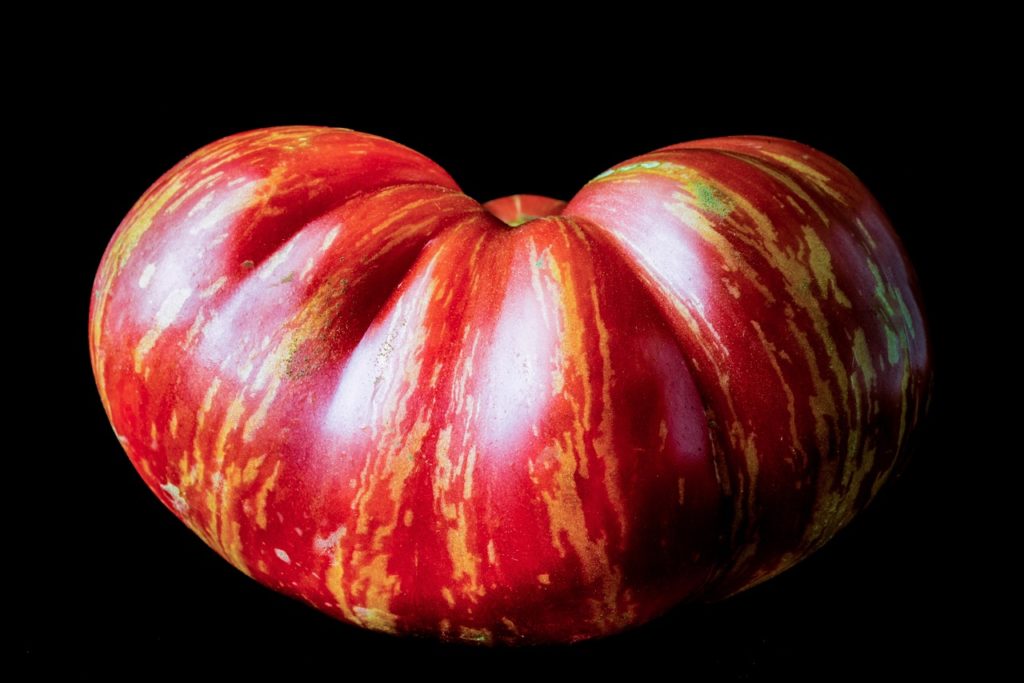The Curious Case of the Edible Heirloom Posted by Gary Locke on Aug 21, 2020 in Culture
I ate an heirloom last night. Actually, I ate quite a few heirlooms, and I would have liked to have eaten more.
No, I did not somehow eat some of my grandmother’s jewelry, or my father’s old watch. I ate some tomatoes. But they were unusual, somewhat rare, and not perfectly beautiful. We now have access to a variety of fruits and vegetables which were long believed to have disappeared, or at least nearly forgotten. Their sudden appearance at farm stands, along with their popularity, is one of the great trends in American food. But, for anyone learning the English language, I imagine that this might all be a bit puzzling.
The word heirloom is a noun, usually defined as something of value which has been handed down over generations. It is treasured within the family. The value of something is not always financial. Family heirlooms take many forms. Artwork, jewelry, letters, even clothing and recipes can be treasured heirlooms. Often, there is a story associated with an heirloom. If you are fortunate enough to inherit or be presented with an heirloom, you will likely be told why it is considered valuable.
Heirloom vegetables, fruits, plants, and herbs come from seeds that have been preserved and cultivated over generations. They continue to survive because people have cared enough about them to keep planting them, preserving the seeds every season. Many of them look nothing at all like the more popular and common varieties we see at today’s supermarkets.
From the late 16th century to the middle of the 20th century there was a huge variety of produce grown in America which we never, or rarely, see today. The reason is simple – they don’t grow quickly, they don’t grow easily, and they don’t all look the same.
Americans began to industrialize our farming after World War II. We grew crops on a massive scale to feed not only millions of our own citizens but also to sell and feed to millions all over the world. This meant growing things that could grow quickly and would look the same on grocery shelves everywhere. Hothouse vegetables, which could essentially be grown anywhere, were important crops. Crops became uniformly the same, wherever you went across the country.
Not all varieties could be grown that way. Many take longer to cultivate and need extra care and attention. Fortunately, small farms in rural communities treasured these hard-to-grow crops. However, the practice of trading seeds with other farmers, which was common in the U.S. during the 18th and 19th centuries, died out. If a variety were grown in only one county in a region, it stayed there and would be unknown throughout the rest of the country.
These plants are open-pollinated, meaning that they are pollinated naturally by birds, insects, and even just the wind. Much of the produce on typical grocery shelves have been genetically modified and treated so that their final appearance will be the same. Heirloom produce is genetically diverse, and thus may have all manner of variations in appearance and taste. This is what makes them unique.
While heirloom tomatoes get the most attention, farm stands across the country have many heirloom products. Although time has almost forgotten them, they continue to be cultivated, And now, thanks to interest in organic and natural foods, seeds that have been saved and cataloged have found new life.
Here are just some of the treasured, and delicious, heirlooms you may find at farm stands across the U.S.
Apple: Cox’s Orange Pippin – Trust me, this is an absolutely delicious apple!
Bean: Kentucky Wonder Pole Beans – One of the highlights of my year is when these beans return to the market.
Carrot: Amarillo Yellow – This is a sweet, bright yellow carrot.
Corn: Peaches and Cream – I love white and yellow kernel corn on the cob, and this variety is very sweet.
Potato: Mountain Rose – Deep red on the outside, neon pink on the inside, this potato is fantastic in potato salads.
Tomato: Cherokee Purple – Yes, I have a favorite tomato and it is this one. It’s juicy, sweet, and beautiful when sliced.
Have you tried any heirloom fruit or vegetables? I’d love to know your favorites.

Build vocabulary, practice pronunciation, and more with Transparent Language Online. Available anytime, anywhere, on any device.




